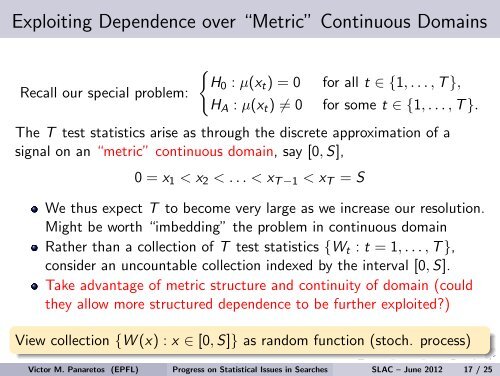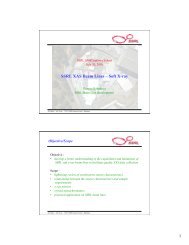Looking Elsewhere and Looking Everywhere (a.k.a. Multiple Testing ...
Looking Elsewhere and Looking Everywhere (a.k.a. Multiple Testing ...
Looking Elsewhere and Looking Everywhere (a.k.a. Multiple Testing ...
Create successful ePaper yourself
Turn your PDF publications into a flip-book with our unique Google optimized e-Paper software.
Exploiting Dependence over “Metric” Continuous Domains<br />
Recall our special problem:<br />
<br />
H0 : µ(xt) = 0 for all t ∈ {1, . . . , T },<br />
HA : µ(xt) = 0 for some t ∈ {1, . . . , T }.<br />
The T test statistics arise as through the discrete approximation of a<br />
signal on an “metric” continuous domain, say [0, S],<br />
0 = x1 < x2 < . . . < xT −1 < xT = S<br />
We thus expect T to become very large as we increase our resolution.<br />
Might be worth “imbedding” the problem in continuous domain<br />
Rather than a collection of T test statistics {Wt : t = 1, . . . , T },<br />
consider an uncountable collection indexed by the interval [0, S].<br />
Take advantage of metric structure <strong>and</strong> continuity of domain (could<br />
they allow more structured dependence to be further exploited?)<br />
View collection {W (x) : x ∈ [0, S]} as r<strong>and</strong>om function (stoch. process)<br />
Victor M. Panaretos (EPFL) Progress on Statistical Issues in Searches SLAC – June 2012 17 / 25





